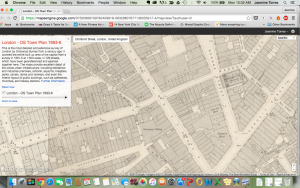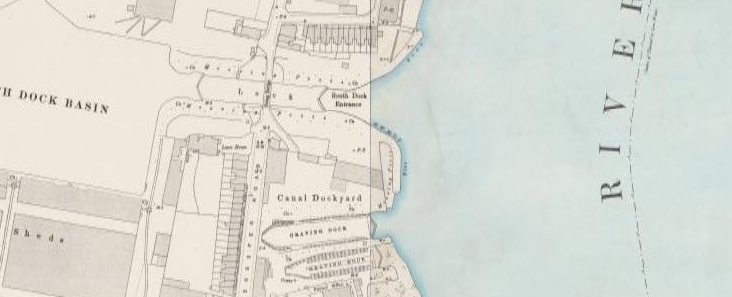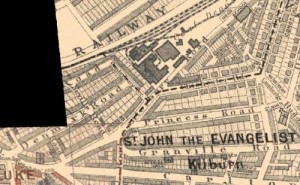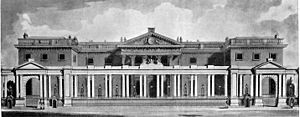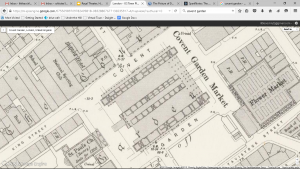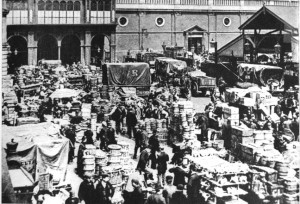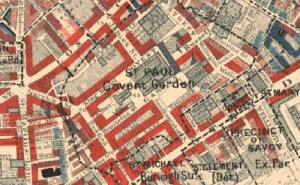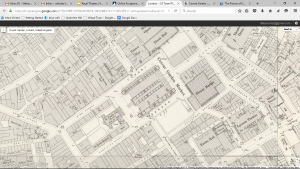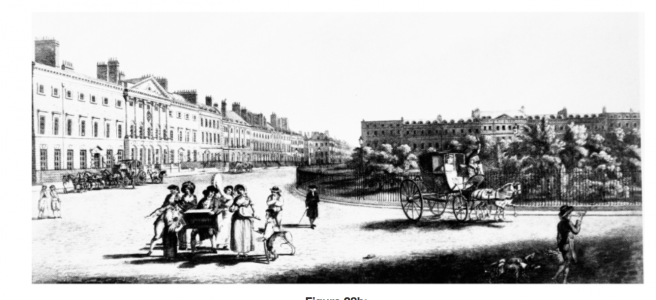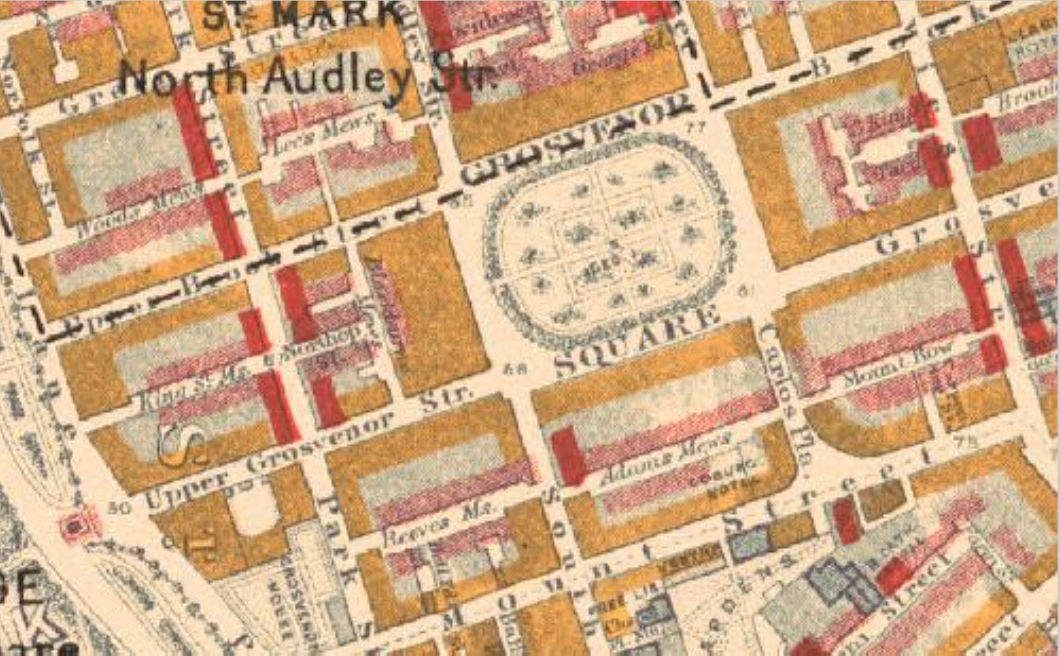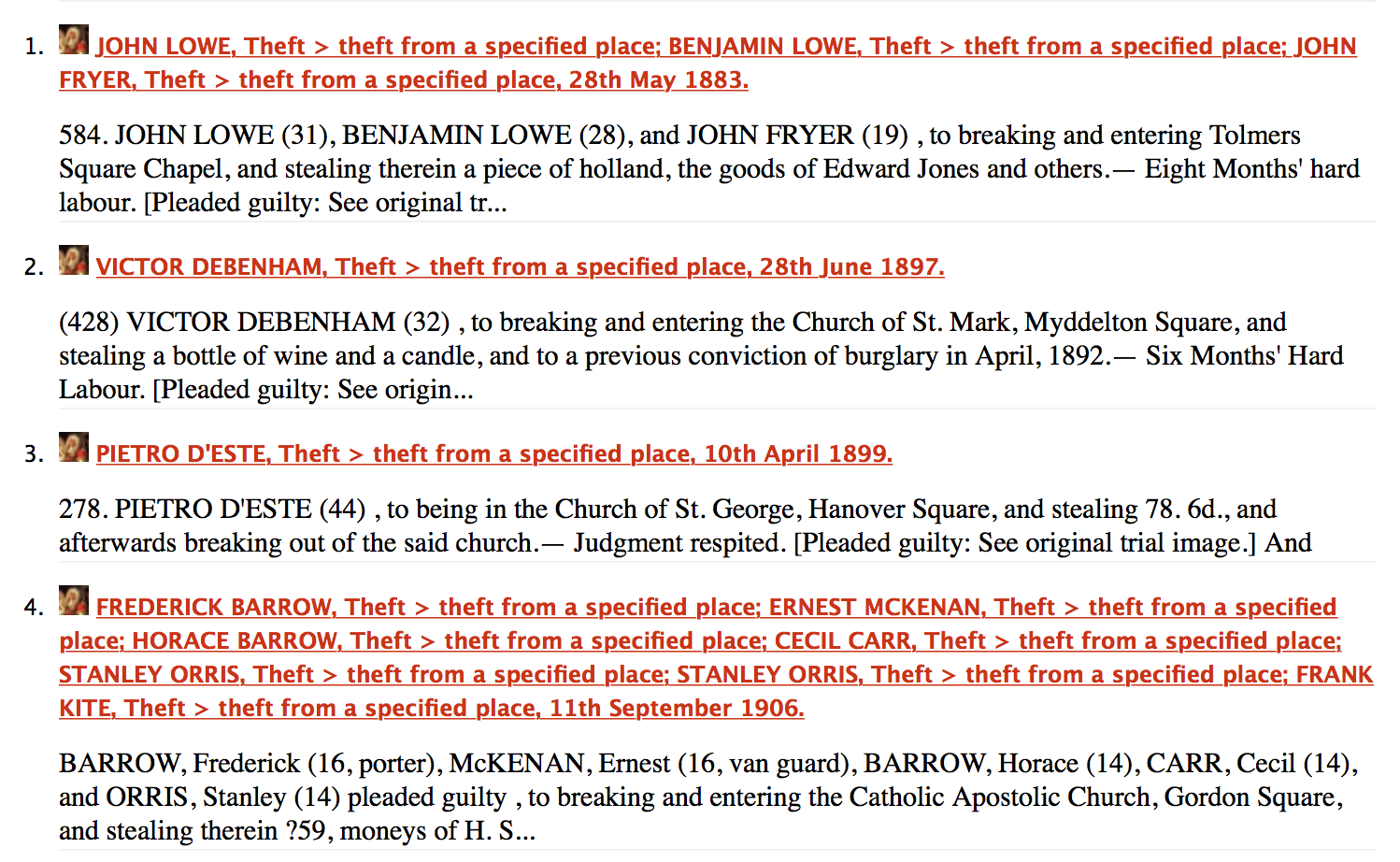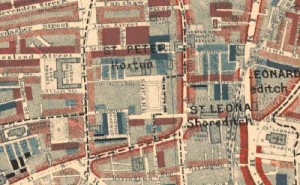Selby Royal is the fictional country estate where Dorian hosts a house party where the Duke and Duchess of Monmouth, Lord Henry, Lady Naraborough, and other distinguished guests gather.
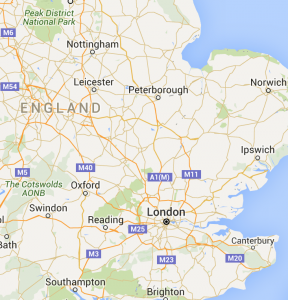
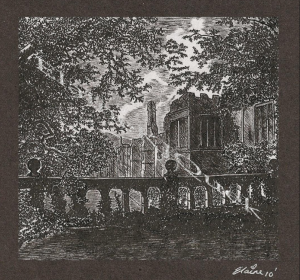 (Victorian Google Maps image on right, Fictional depiction of Selby Royal on left)
(Victorian Google Maps image on right, Fictional depiction of Selby Royal on left)
The guests are gathered in the conservatory of the Selby Royal enjoying tea, cakes, and the company of the other twelve guests around them. At the house-party Dorian is whispering in the ear of the Duchess of Monmouth in front of her elderly husband is present who is “a jaded-looking man of sixty” (Chapter 17). The Duchess and Dorian continue in conversation about the value of beauty, love, and life experiences. Later on at the party, Dorian claims he sees the face of James Vane in the window and is terrorized for the remainder of the evening.
The country house is in Nottinghamshire, far from London, but its description reveals that the West End of London’s wealth is represented in the activities and the decor. The plates are fine china and silver, the wicker chair is draped in silk, and the lamp is covered in lace. In the beautiful countryside home, the Duke speaks of his latest Beetle for his collection exemplifying the wealthy’s appreciation of nature. The furnishings are high end and this nature is morphed into valuables with the Duke’s immortalization of the Brazilian Beetle.
“On a peach-coloured divan sat Lady Narborough, pretending to listen to the duke’s description of the last Brazilian beetle that he had added to his collection.”
The crime in the area is relatively non-violent. Crimes consisted of mainly theft and deception. According to the Proceedings of Old Bailey, the most interesting instance of theft was when someone stole another’s horse. The offender was found not guilty.
The wealth of the area was relatively well to do middle class. Some of the people in the area were poor but the majority were living comfortably or very comfortably like Dorian. This area of the country was a place for the upper middle class to have nice homes close to nature with neighbors of similar wealth. The country allowed them to seek the peace of nature without forfeiting their comfortable lifestyles.
Works cited
“Booth Poverty Map. Charles Booth Online Archive. New Bond Street. Web. 1 Dec. 2015.
“The Picture of Dorian Gray (1891) Chapter 17.” – Wikisource, the Free Online Library. Web. 1 Dec. 2015.
“The Proceedings of the Old Bailey.” Results. N.p., n.d. Web. 1 Dec. 2015.

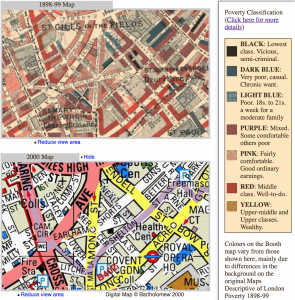



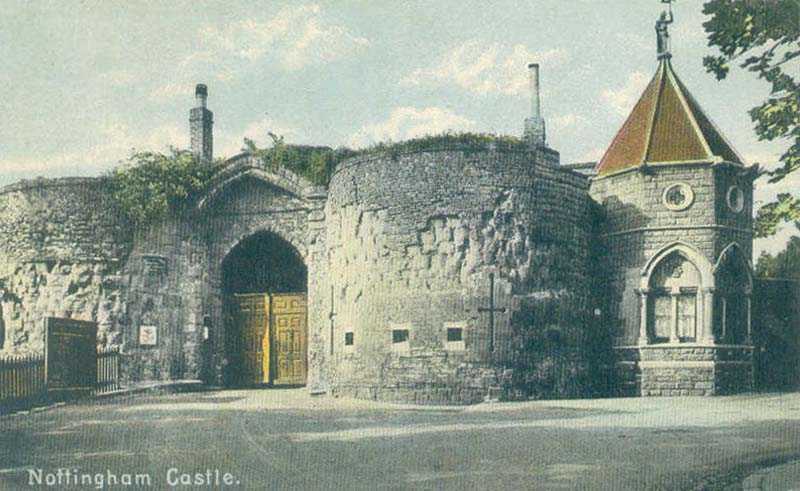
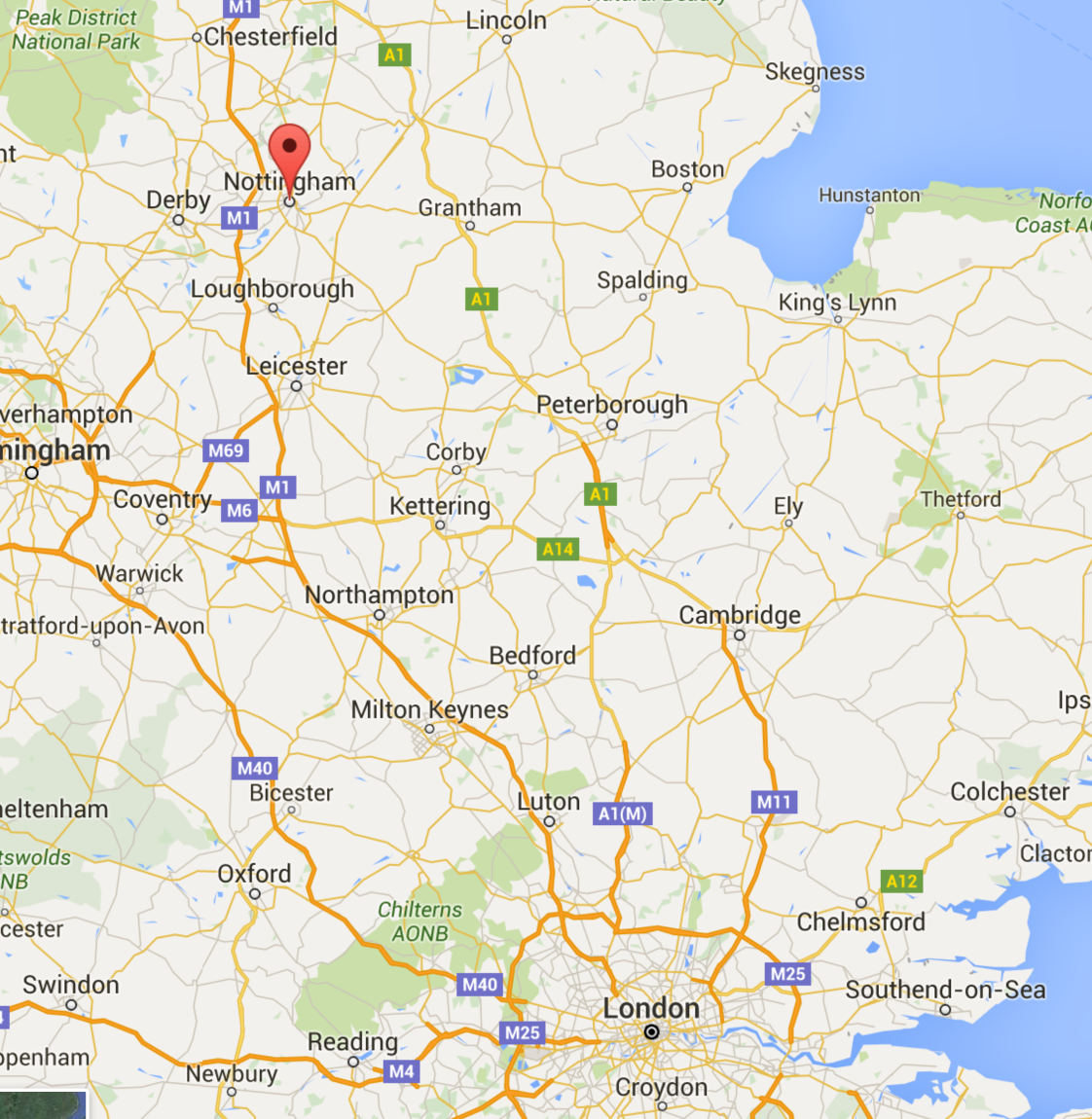
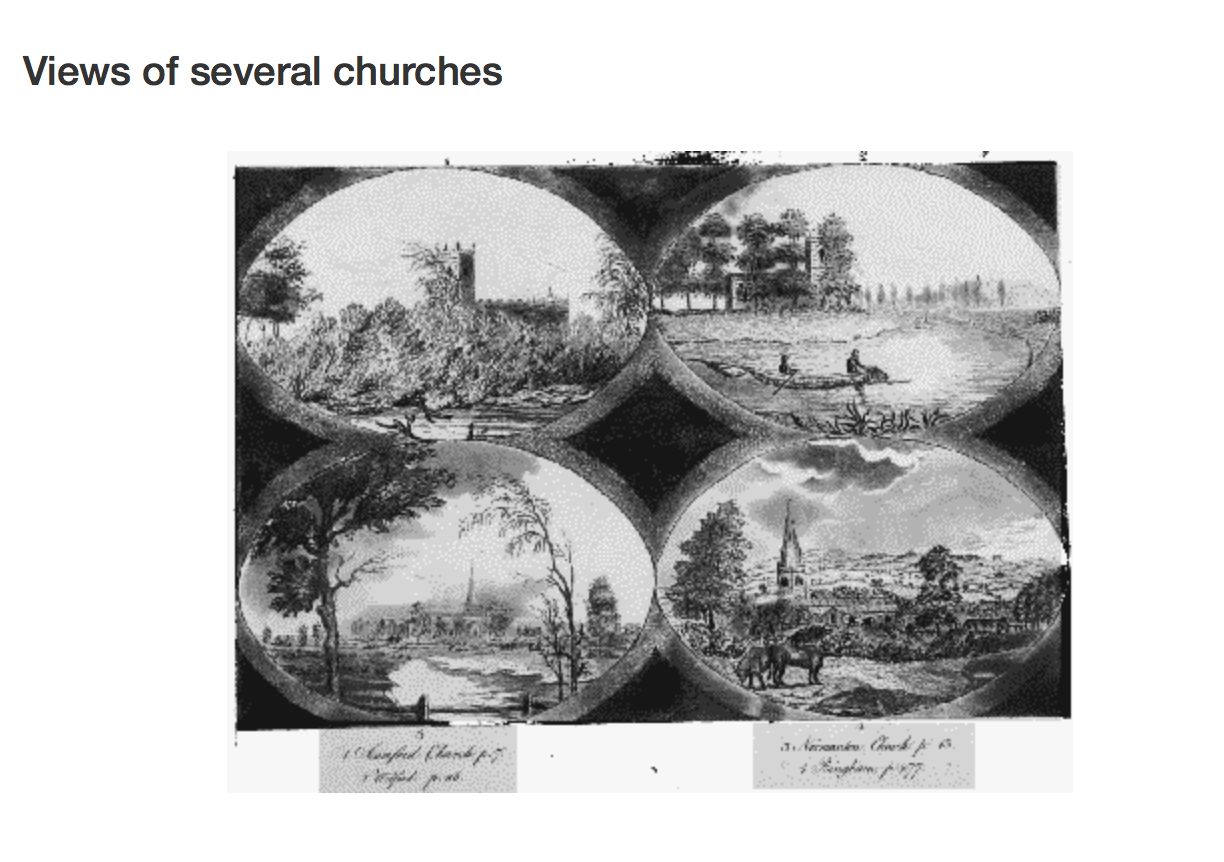
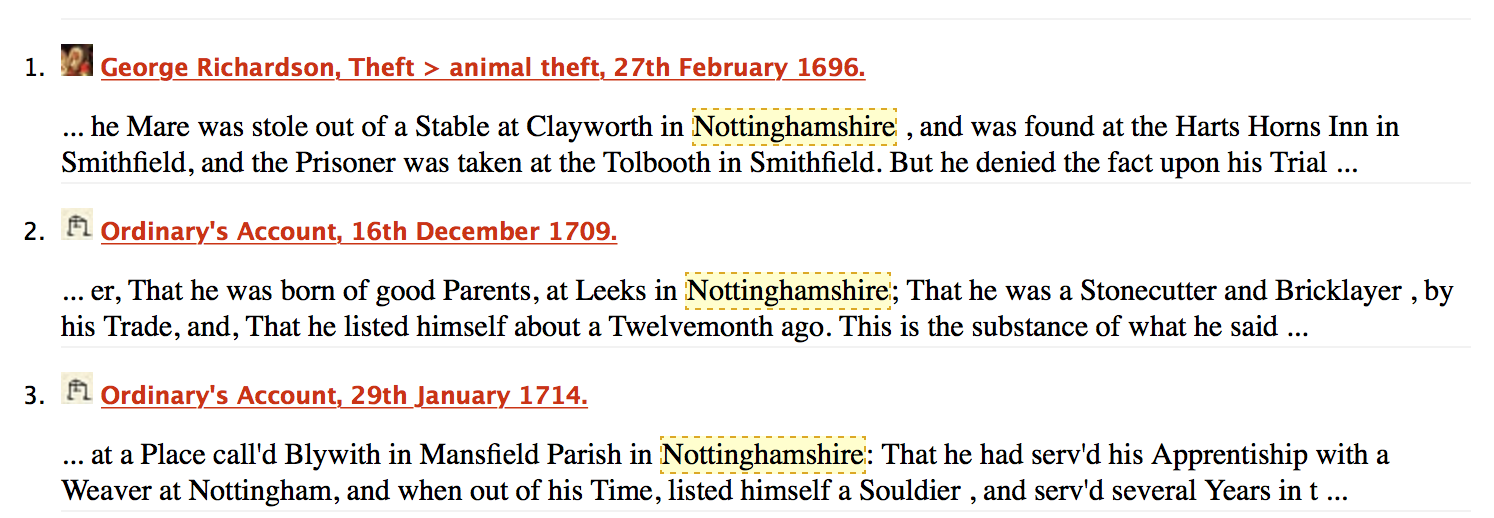 A search of the Proceedings of the Old Bailey turns up only one crime that took place in Nottinghamshire, the theft of a horse. This may remind readers of Dorian Gray riding off on his mare to the stables to see the body of James Vane. Nottinghamshire does come up in other cases a total of twenty nine times but the area is usually mentioned in a positive light. For example, one ordinary’s testimony states “That he was born of good Parents, at Leeks in Nottinghamshire.” Therefore, we can conclude that Nottinghamshire would have been associated with a very peaceful and crime free, almost utopian, country parish. I would compare this to the way many residents of New York City view the Hudson Valley area. By setting up this country home as a topic of gossip and controversy, Wilde is undermining his Victorian audience’s perspective of the area. This gives the impression that danger, crime, and sin are not isolated to a location like the East End. In Wilde’s novel, Selby Royal is both the grand estate associated with the wealthy upper classes and a mansion of improprieties and sins that are implied and spoken about, but never directly addressed.
A search of the Proceedings of the Old Bailey turns up only one crime that took place in Nottinghamshire, the theft of a horse. This may remind readers of Dorian Gray riding off on his mare to the stables to see the body of James Vane. Nottinghamshire does come up in other cases a total of twenty nine times but the area is usually mentioned in a positive light. For example, one ordinary’s testimony states “That he was born of good Parents, at Leeks in Nottinghamshire.” Therefore, we can conclude that Nottinghamshire would have been associated with a very peaceful and crime free, almost utopian, country parish. I would compare this to the way many residents of New York City view the Hudson Valley area. By setting up this country home as a topic of gossip and controversy, Wilde is undermining his Victorian audience’s perspective of the area. This gives the impression that danger, crime, and sin are not isolated to a location like the East End. In Wilde’s novel, Selby Royal is both the grand estate associated with the wealthy upper classes and a mansion of improprieties and sins that are implied and spoken about, but never directly addressed.